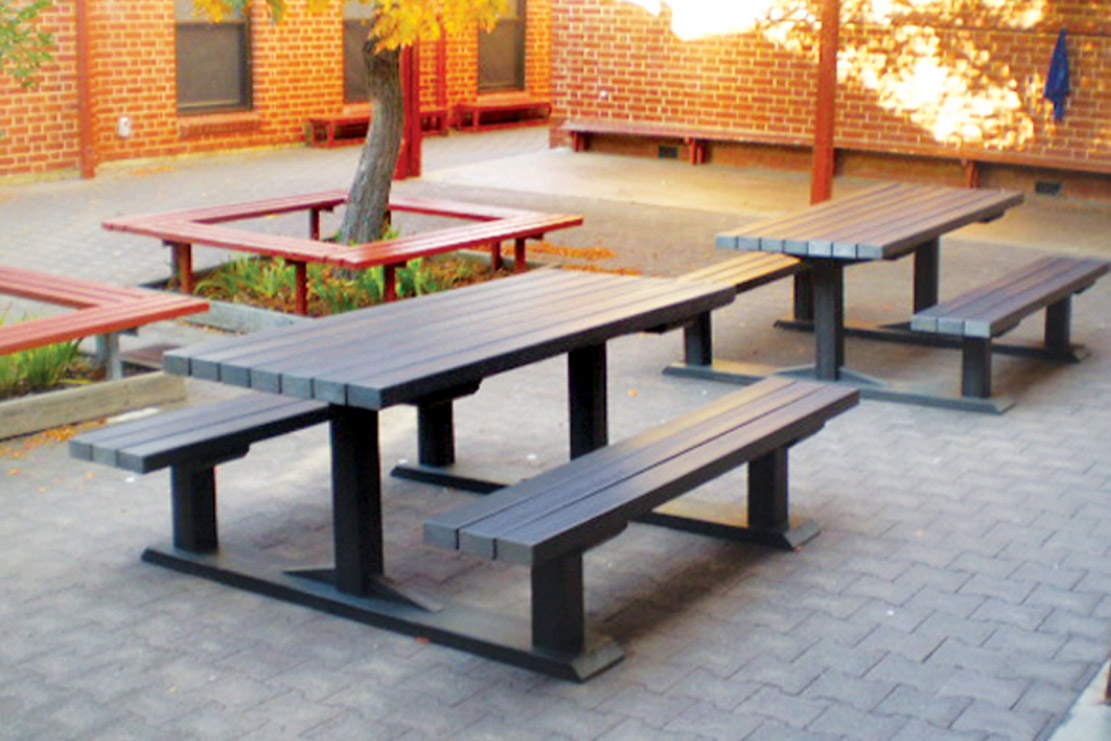Public parks are a vital part of urban landscapes, offering a sanctuary of green amidst concrete jungles. The quality and appeal of these parks significantly depend on the outdoor park furniture installed within them. From benches and picnic tables to bike racks and trash receptacles, the right furniture not only enhances the aesthetic appeal of the park but also promotes its functionality and accessibility. In this article, we explore the various types of outdoor park furniture, their benefits, and the considerations to keep in mind when selecting these essential components.
Types of Outdoor Park Furniture
Benches and Seating Solutions
Benches are the cornerstone of any outdoor park furniture ensemble. They provide visitors with places to rest, socialize, and enjoy the surrounding environment. Modern park benches come in various materials, including wood, metal, and recycled plastic, each offering unique benefits. Wooden benches blend seamlessly with natural surroundings, while metal benches are known for their durability and low maintenance. Recycled plastic benches are eco-friendly options that resist weather and vandalism.
Picnic Tables
Picnic tables encourage social gatherings and family activities within parks. They are typically made from materials such as treated wood, metal, or composite plastics. Some picnic tables are designed to be wheelchair-accessible, ensuring inclusivity for all park visitors. These tables often feature attached benches and are built to withstand heavy use and varying weather conditions.
Trash Receptacles
Maintaining cleanliness in parks is crucial for both aesthetics and public health. Trash receptacles are strategically placed to encourage proper waste disposal. They come in various designs, including those with lids to keep pests out and to reduce litter caused by wind. Modern trash receptacles are often made from metal or high-density polyethylene, both known for their durability and ease of maintenance.
Playground Equipment
Playgrounds are a key feature in many parks, providing children with safe and engaging spaces to play. Playground equipment includes swings, slides, climbing structures, and interactive play panels. The materials used for playground equipment are chosen for safety, durability, and accessibility, often including plastics, metals, and rubberized surfaces.
Benefits of High-Quality Outdoor Park Furniture
Enhanced Visitor Experience
Quality park furniture significantly enhances the visitor experience by providing comfort and convenience. Well-placed benches allow for restful pauses, picnic tables facilitate family outings, and clean environments maintained by sufficient trash receptacles make for pleasant visits.
Promoting Social Interaction
Outdoor furniture creates natural gathering spots within parks. Benches and picnic tables encourage social interaction among visitors, fostering a sense of community. These interactions can be particularly beneficial in urban areas where social spaces are limited.
Boosting Aesthetic Appeal
Attractive and well-maintained park furniture contributes to the overall aesthetic appeal of the park. Design elements such as color, style, and material choice can complement the natural environment and create a cohesive look that enhances the park's beauty.
Considerations for Selecting Outdoor Park Furniture
Durability and Maintenance
Outdoor park furniture must withstand various weather conditions and heavy usage. Materials such as metal, treated wood, and recycled plastics are popular choices due to their durability and low maintenance requirements. Anti-vandalism features and easy-to-clean surfaces are also important considerations.
Environmental Impact
Sustainability is a growing concern in urban planning. Opting for eco-friendly materials, such as recycled plastics and sustainably sourced wood, can reduce the environmental footprint of park furniture. Additionally, durable furniture reduces the need for frequent replacements, further minimizing environmental impact.
Cost and Budget
While high-quality park furniture may require a larger initial investment, it often proves cost-effective in the long run due to its durability and lower maintenance costs. Budget considerations should balance initial costs with the anticipated lifespan and upkeep requirements of the furniture.
Conclusion
Outdoor park furniture plays a crucial role in defining the functionality, aesthetics, and overall appeal of public parks. By carefully selecting and maintaining these essential components, park planners can create inviting, inclusive, and sustainable spaces that serve the community effectively. Whether through comfortable benches, robust bike racks, or engaging playground equipment, the right furniture enhances the visitor experience and fosters a sense of community.





Comments